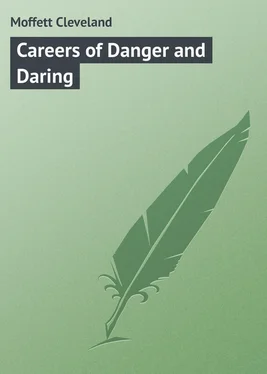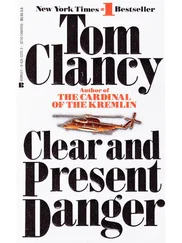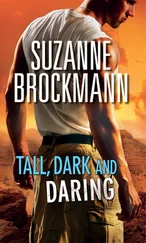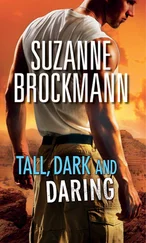Cleveland Moffett - Careers of Danger and Daring
Здесь есть возможность читать онлайн «Cleveland Moffett - Careers of Danger and Daring» — ознакомительный отрывок электронной книги совершенно бесплатно, а после прочтения отрывка купить полную версию. В некоторых случаях можно слушать аудио, скачать через торрент в формате fb2 и присутствует краткое содержание. Жанр: foreign_prose, на английском языке. Описание произведения, (предисловие) а так же отзывы посетителей доступны на портале библиотеки ЛибКат.
- Название:Careers of Danger and Daring
- Автор:
- Жанр:
- Год:неизвестен
- ISBN:нет данных
- Рейтинг книги:4 / 5. Голосов: 1
-
Избранное:Добавить в избранное
- Отзывы:
-
Ваша оценка:
- 80
- 1
- 2
- 3
- 4
- 5
Careers of Danger and Daring: краткое содержание, описание и аннотация
Предлагаем к чтению аннотацию, описание, краткое содержание или предисловие (зависит от того, что написал сам автор книги «Careers of Danger and Daring»). Если вы не нашли необходимую информацию о книге — напишите в комментариях, мы постараемся отыскать её.
Careers of Danger and Daring — читать онлайн ознакомительный отрывок
Ниже представлен текст книги, разбитый по страницам. Система сохранения места последней прочитанной страницы, позволяет с удобством читать онлайн бесплатно книгу «Careers of Danger and Daring», без необходимости каждый раз заново искать на чём Вы остановились. Поставьте закладку, и сможете в любой момент перейти на страницу, на которой закончили чтение.
Интервал:
Закладка:
There was something quite touching, I thought, in the humble frankness of this big-shouldered man. Yes, he had been afraid, he whose business it was to fear nothing, afraid of some squeaking copper, and his face seemed to say that there are things about steeples not so easily explained, things not even to be talked about. And abruptly, as by an effort, he left this part of the subject and told a funny story of his adventures coming home late one night without a key, and getting in by way of the roof and an iron pipe; a simple enough climb had he not been taken for a "purglaire" by an irate German lodger, who appeared in nightgown and phlegmatic fright, and vowed he would "haf him a revolfer, a skelf-skooter, in the morning."
This effort at diversion turned Merrill into gaiety for a moment, but straightway memory brought back the somber theme.
"I'll give you another case," said he, changing again abruptly, "where I wasn't frightened, but should have been. It was out in Chicago, and two of us were on a staging hung down the front of a clothing factory. We were painting the walls. My partner had made his end of the staging fast, and I had made mine fast. Perhaps if I'd been longer in the business I would have taken more notice how he secured his rope, for it meant safety to me as well as him, and I knew he'd been drinking, but I supposed it was all right. Well, it wasn't all right; his rope held for three or four hours, and then, at just about eleven o'clock, it slipped, and the staging fell from under us. We were six stories up, and right below were the sidewalk flagstones. That's the time I ought to have been frightened, but I only said to myself, 'Hello! this thing's going down,' and caught the window-ledge in front of me. Then I hung there, wondering if I could pull myself up or if any one would come to help me. I called out not very loud, and I wasn't excited. Pretty soon I saw I couldn't pull myself up, for I had a poor hold with my fingers, and the ledge was smooth stone. Then I saw they'd have to hurry if they were going to pull me in. Then I didn't care. I – I – "
"You fell?"
He nodded.
"What, six stories down?"
He nodded again. "The thing that saved me was an awning over the sidewalk. Some man across the way saw me hanging from the window, and he ran over quickly and let the awning down. I'd like to shake that man by the hand, but I never knew who he was. When I came to myself I was at the hospital done up in plaster, and I stayed there nine months."
"Badly hurt?" I asked, shrinking.
Merrill smiled. "It didn't do me any particular good. I'm a big, strong fellow now, but I wasn't much after that fall. Both my legs were broken. Both my arms were broken. My right shoulder and right wrist were dislocated, and – let's see. Oh, yes, I had three ribs torn away from the breast-bone."
"And your – "
"My partner? Poor lad! You wouldn't care to hear how they found him. They laid him away kindly the next day."
He smiled in a sort of appealing way, and then came the worn, wistful look I had noticed, and his forehead lines deepened. I fancy all men who follow steeple-climbing get those strained, anxious eyes.
IV
EXPERIENCE OF AN AMATEUR CLIMBING TO A STEEPLE-TOP
IT came to my knowledge, one bracing day in October, that "Steeple Bob" had agreed to "do" that famous Brooklyn Church of the Pilgrims, with its queer, crooked spire and big brass ball, a landmark from the river on Columbia Heights.
"It's one of those easy jobs that are the hardest," said Merrill. "If you want to see us use the stirrups come over."
That was exactly what I did want to see, this puzzling stirrup process which allows a man to lift himself by his boot-straps, as it were, up the last and narrowest and most dangerous length of a steeple; so I agreed to be there.
"If you like, you can go up on the swing yourself!" said Merrill, with the air of conferring a favor. I expressed my thanks as I would to a lion-tamer offering me the hospitality of his cages, then asked how he meant that easy jobs are the hardest.
"Why, easy jobs make a man careless, and that gets him into trouble. Another thing, little old churches look easy, but they're apt to be treacherous. Now, this steeple on the Church of the Pilgrims is built of wood, with loose shingles on it, and a tumble-down iron lightning-rod, and rickety beams, and shaky ladders, and – well, you feel all the time as if you were walking on eggs. It's just the kind of a steeple that killed young Romaine about a month ago."
Of course I asked for the story of young Romaine, and was told of certain climbers who advertise their skill by using a steeple-top for acrobatic feats that have nothing to do with repairing. Upon such Merrill frowned severely.
"Romaine was a fine athlete," said he, "and a fearless man, but he went too far. He would stretch out on his stomach across the top of a steeple, and balance there without touching hands or knees, and he'd do all sorts of circus tricks on lightning-rods and weather-vanes and flagpoles – anything for notoriety. I told him he'd get killed sure some day, but he laughed at me. Well, it wasn't a week after I warned him when he was killed. He climbed an old lightning-rod without testing it (it was on a little church up at Cold Spring, New York), and just as he was reaching the steeple-top, with a whole town watching him, the end of the rod pulled out, and he swung off with it, ripping out every dowel, like the buttons off a coat, right down to the ground – smash. Poor fellow, when I read the news I left my job at Trinity and took the first train up to bury him."
This sad story lingered in my mind that night, and was there still the next afternoon as I drew near the Church of the Pilgrims to witness the first day's climbing. Already, at a distance, I knew that the men were at work from the upbent heads of people on the street who stared and pointed. And presently I made out two white figures on the steeple, one swinging about fifteen feet below the ball, the other standing against the shingled side without any support that I could see. Up the old tower (inside) I made my way, and two ladders beyond the "bell-deck" came upon Walter Tyghe, "Steeple Bob's" assistant, astride of a stone saddle on one of the four peaks where the tower ends and the steeple begins. There was a clear drop of a hundred feet all around him. He was "tending" the two men aloft, as witnessed a couple of ropes dangling by him. It was two jerks to come down and one to go up. Were he to lose his balance and let go the hauling-rope, the men on the swing would instantly be killed, as they had no "lock-blocks" on.
"Come out here," said Walter, "there's plenty of room," and, thus encouraged, I straddled the peak, and we sat face to face, as two men might sit on a child's rocking-horse, while the tower pigeons circled beneath us, alarmed at this intrusion. Far down on the sidewalk were little faces of distorted people; far up at the steeple-top were legs kicking at ropes. And off over red housetops was the river, and the great towers of New York spread with silver plumes by the steam jets.
"Now you can see the stirrups working," said Walter, and, looking up, I saw a figure swing back from the steeple, an arm shoot out, and a length of rope go wriggling around the shaft, cast like a lasso. Then the rope was drawn into a noose, and the noose hauled tight. The legs kicked, the figure hitched itself up about a foot, and again the rope was cast (another rope), and a second noose still higher made secure. That is all there is to it. The steeple-climber stands in a stirrup held by one noose while he lassoes the shaft above him with another noose, supporting another stirrup on which he presently stands. And so, foot by foot, the climber rises, shifting noose and stirrup at each change, resting now on one, now on the other, and finally reaching the cross, or ball, or weather-vane at the very top.
Читать дальшеИнтервал:
Закладка:
Похожие книги на «Careers of Danger and Daring»
Представляем Вашему вниманию похожие книги на «Careers of Danger and Daring» списком для выбора. Мы отобрали схожую по названию и смыслу литературу в надежде предоставить читателям больше вариантов отыскать новые, интересные, ещё непрочитанные произведения.
Обсуждение, отзывы о книге «Careers of Danger and Daring» и просто собственные мнения читателей. Оставьте ваши комментарии, напишите, что Вы думаете о произведении, его смысле или главных героях. Укажите что конкретно понравилось, а что нет, и почему Вы так считаете.












